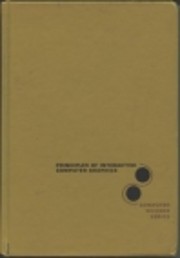

Carregue numa fotografia para ir para os Livros Google.
|
A carregar... Principles of Interactive Computer Graphicspor William M. Newman
 Nenhum(a) Ainda não há conversas na Discussão sobre este livro. sem críticas | adicionar uma crítica
Pertence a Série
Covers Many Facets of Computer Graphics & Software Design, Including: Interactive Graphics, Point Plotting & Line Drawing Não foram encontradas descrições de bibliotecas. |
Current DiscussionsNenhum(a)Capas populares
 Google Books — A carregar... Google Books — A carregar...GénerosSistema Decimal de Melvil (DDC)001.55Information Computing and Information Knowledge [formerly : Cybernetics & related disciplines] [formerly : Information & communication] [formerly : Communication through records]Classificação da Biblioteca do Congresso dos EUA (LCC)AvaliaçãoMédia: (4) (4)
É você?Torne-se num Autor LibraryThing. |
||||||||||||||||||||||||||||||||||||||||||||||||||||||||||||||||||||||||||||||||||||||||||||||||||||||||||||||||||||||||
Der er lidt kuk i indholdsfortegnelse og indhold. Fx mangler 27-3 begge steder, men skulle nok være '27.3 A Transformed Display File Model'. 26.2 hedder 27.2 begge steder. (